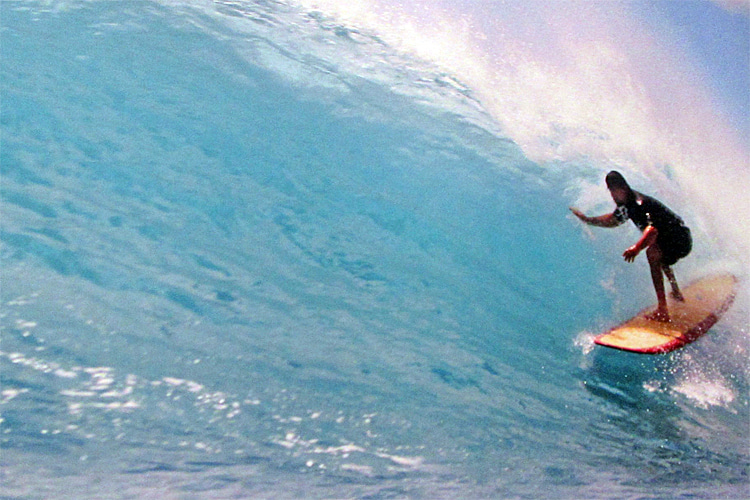My best friend was the son of an admiral. The admiral was stationed for two years in San Diego, and that's how I met his son, Billy.
Before they moved to San Diego, they lived in Panama. It was in Panama where Billy learned to surf.
I don't remember how we met, but I'm almost sure it was through a mutual friend. It was at the start of the ninth grade.
We lived close to the beach, a 15-minute bike ride, and we rode used boards, which we kept in the backyards of various friends who lived in homes that were directly above the breaking waves.
This would have been in the fall of 1973.
Billy and I became fast friends, and we surfed together almost every day when there were decent waves to ride.
Surfing was what our world revolved around. We had surf posters all over our walls.
We knew who were all the famous surfers in the world and how they surfed, their surfing style, their technique, and what surfing breaks they were famous for mastering.
I was a veritable walking encyclopedia of surfing history.
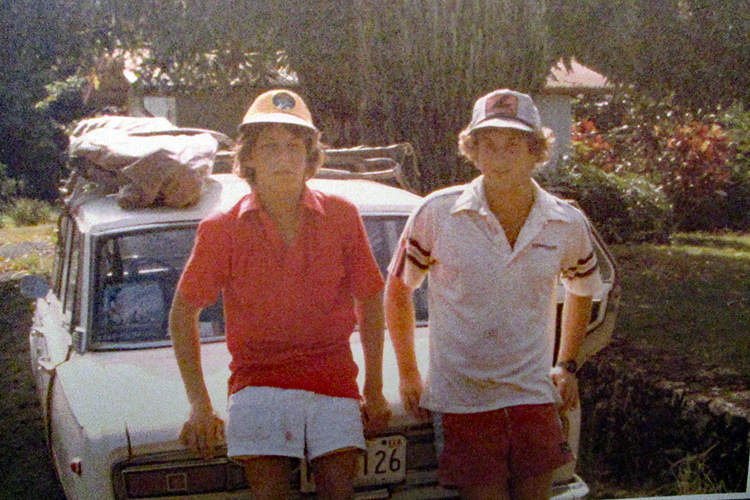
Surf in the High School Library
Shortly after entering the seventh grade, in the fall of 1971, I discovered that our junior high school librarian had stocked their back room with the world's largest collection of surfing magazines and surfing books.
No kidding.
There wasn't a larger collection of surf books and surf magazines in every country where they were sold.
I discovered this when I started the seventh grade.
The rowdy introduction slide show and video presentation emceed by our coach in the auditorium mentioned that there was a library in the school.
When he mentioned the library, the slide projector photo displayed on the huge auditorium screen showed a surfer-looking dude with his head buried in a surfing magazine.
I knew that was where I was going. But when I got there, I couldn't find anything in the library related to surfing.
I asked the librarian if they had anything about surfing in the library.
The librarian, it turned out, was a man probably in his early 30s, which seemed really strange to me at the time.
It was still mostly a man's world in 1971.
We were just pulling out of the "women had to end up as happy homemakers" era into a new world of feminist equality.
But to a 12-year-old, at the time, it was still kind of a shock to see a male librarian.
Just the word and even the meaning of "librarian" seemed to 12-year-old me to be synonymous with "book lady," something a woman was naturally supposed to do.
But luckily for me, this guy, this male librarian, decided to break the rules.
And even luckier for me, he turned out to be a surfer who decided to stock the world's largest surfing library right in my junior high school.
He told me the library had everything ever published about surfing anywhere in the world, and it was all in the mysterious "back room," which I, unfortunately, never got to see for myself.
But I knew it had to be what he said it was because as quickly as I read through the surfing books and magazines he gave me - from cover to cover and that I was never allowed to leave the library with - he kept supplying me with new ones to get started on.
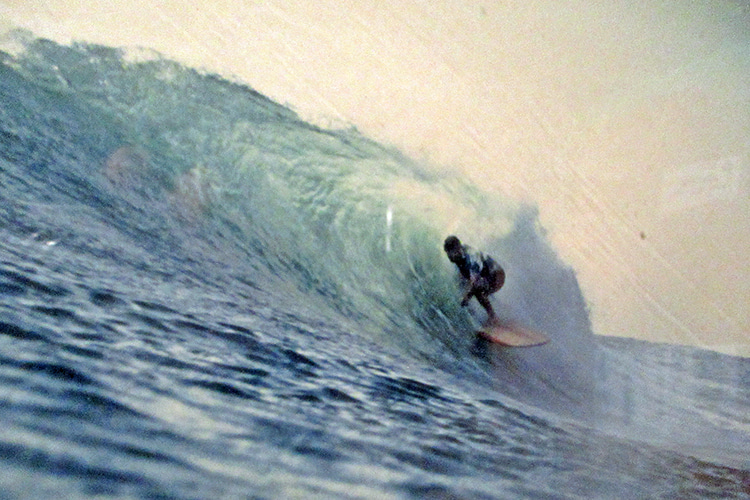
14 and Fanatical About Surfing
By the time I finished ninth grade, I had read everything published about surfing in English.
And this brings me back to the story of my friendship with Billy. As you have noticed, I was a fanatical 14-year-old surfer when I met Billy.
I ate, slept, and dreamed of surfing.
Shortly after we met, Billy told me that his father was to be stationed in San Diego for a two-year stint and, after that, the family would be moving to Oahu, the mecca of all surfers.
The holy grail of surfing. The land of the Banzai Pipeline and the legendary North Shore.
I wanted to go too. I wanted to go surfing in Hawaii as badly as any kid ever wanted anything in the history of kids.
But unfortunately for me, my parents couldn't have cared less about my dreams of surfing in Hawaii.
I'd have to figure out how to get there on my own.
Over the next year and a half, Billy and I surfed together almost every day, and the date of his departure to Hawaii was coming closer and closer.
All I could focus my mind on during that entire time were various unrealistic plots and schemes that ended up with me living in Hawaii, too.
Then, one day, in the winter of my tenth grade in high school, I saw an article in the newspaper about something called the Proficiency Examination.
It said a new test would be introduced to high school students to combat the high drop-out rate in California.
It enabled a high school student to take an exam and receive the legal equivalent of a high school diploma.
It still exists to this day.
It's the California High School Proficiency Exam (CHSPE), and it's open to any other fanatical California surfers who are smart enough to pass it and don't want to drop out of school without a high school diploma.
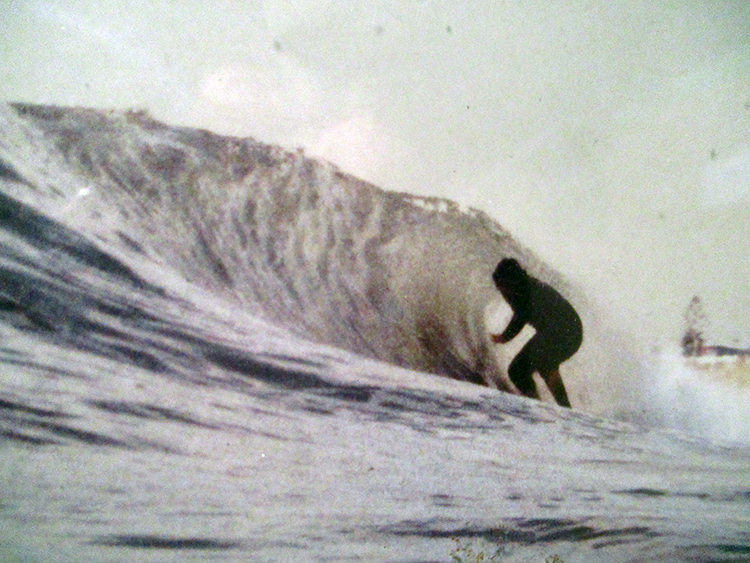
The Express High School Diploma
At the time, I was doing terribly in school even though I supposedly had a brilliant IQ.
I read books of every kind, all the textbooks for school, and even the entire series of the Encyclopedia Britannica from A to Z, from cover to cover.
I wasn't just a walking encyclopedia of surfing.
I was a walking encyclopedia of just about anything and everything, but I never did any homework and was ditching school about as often as I went.
So, when I asked my parents if I could get their permission to take a test and get the legal equivalent of a high school diploma, they had to be convinced that such a test existed.
But once I proved it was a new thing, and it did exist, they said OK, take the test and get your diploma equivalent.
In the summer of 1975, I was in the first group of high school students to ever take the test.
I was even interviewed about it in the San Diego Union-Tribune.
I told them, "It was a snap," and I snapped my fingers when I said that because I was happy.
I was on my way to Hawaii.
Billy had already left by that time, but he scribbled on a piece of paper the address where his family would be living in Oahu.
He told me I had better get on over there. There'd be a place for me to stay, even if it meant that I had to sleep on his bedroom floor.
I worked painting a fence and gardening until I had the money for a one-way ticket and 50 dollars.
I could have earned more, but I didn't have the patience.
My dad tried to use reverse psychology on me by driving me to the airport and putting me on the plane.
He thought I would chicken out before I boarded. He sure got that wrong. I got on the plane, and off I went.
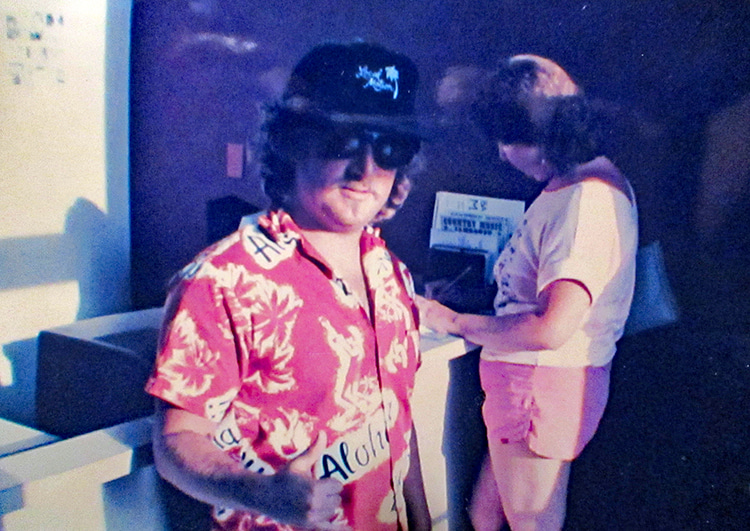
King Street, But Which One?
The plane arrived in Honolulu around 10 p.m.
I remember someone shooting me the shaka sign, and I had no idea what that meant.
I got in a cab with just a small backpack and showed the cab driver the piece of paper Billy gave me with the scribbling on it.
It was an address on "King Street." But, unfortunately, there were five King streets on Oahu.
One of them was on the North Shore, almost two hours away in those days.
You had to take a country road to get to the North Shore. There was no freeway past the Aloha Stadium.
We hit all five of the King streets on Oahu, and not one of them had the address on that piece of paper.
We were going back and forth with the dispatch the entire time, and the cab driver and I were going crazy with despair.
Around two in the morning, my 50 dollars was used up.
The meter was reading well over 60 dollars, and that shows you how prices have changed since then.
It would probably cost hundreds of dollars now to be driven all over Oahu chasing up an address like that.
But then, the voice on the dispatch saved me from homelessness. He said there was one more possibility.
There was a King Street on the navy base in Makalapa, known as Admiral's Row, across the street from the Arizona Memorial.
That made sense to me since Billy's dad was an admiral.
I had told them my friend's dad was an admiral, but I guess they didn't have access to the navy street maps in those days.
When we arrived, we found out from the gate guard that we were at the right place.
The cab driver was the coolest guy ever.
He said I could just pay him whatever I felt like giving him since it was partly their screw-up, but given that he did drive a lot, I gave him 35 dollars, keeping 15 for myself.
Honolulu Thrill
It was a dark and windy night or, more accurately, early morning.
The gate guard, a marine, told me they were expecting me, even though I didn't have their phone number and so I had never called ahead.
He pointed to the biggest mansion on the hill directly in front of us, with a paved walkway up to the front door.
He said just to go right in, the door was open, and Billy's room was the first room at the top of the stairs as you entered the house.
I couldn't believe it.
I walked up the pathway and turned the door handle, and sure enough, it was open. I climbed as quietly as I could up the stairs, entered Billy's room, and gently shook him awake.
He was as stunned as I have ever seen anyone in my life, to this day. He couldn't believe I had made it.
He kept saying, "Oh my God, I can't believe you're here," over and over as he climbed out of bed.
The first thing he did, right then, at three in the morning, was put on the new Aerosmith record on his turntable, at a low volume, of course.
I don't ever remember listening to Aerosmith before then. I think he introduced me to their music.
We rocked on at three in the morning.
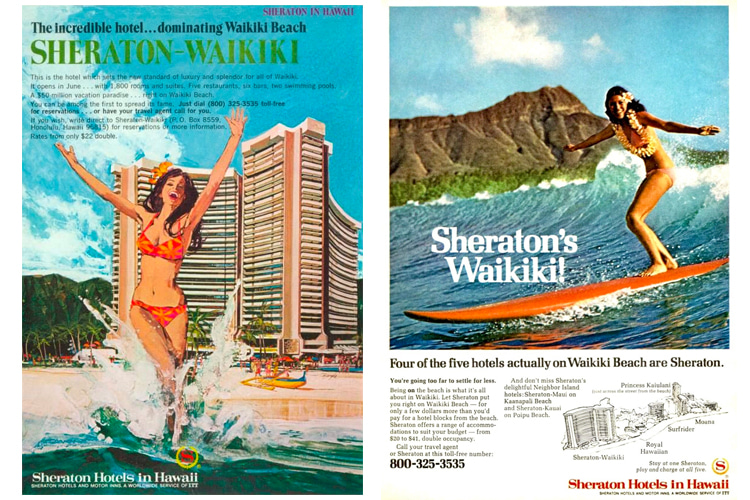
The Kiss That Changed Everything
A couple of days later, I took a city transit bus to Waikiki, with the Maui No Ka Oi advertisements on it, and was walking around among the thousands of pedestrians along Kalakaua Boulevard.
It was different back then compared to now. It was a wider boulevard and could handle much larger foot traffic.
It was busier than Manhattan at lunch hour. I walked into the entrance to the Sheraton Waikiki Hotel, just checking it out.
It was beautiful like you'd imagine Shangri-la to be - throngs of people and this mighty towering entrance, chiaroscuro against the afternoon sun, with palm trees swaying around it.
The bluest of blue oceans behind the hotel.
San Diego was nice, but this was something else - Waikiki in the 1970s.
Out of nowhere, and I do mean that, it seemed like out of nowhere, in all the blindness of the distracting scenery, a beautiful blonde girl, my age, suddenly wrapped her arms around me and gave me the best kiss of my life.
She caught me completely unaware.
All of a sudden, like an incredible dream, I was kissing a gorgeously beautiful blonde.
She pulled back her head and said in the most amazing southern drawl, "I'll bet you're just the right guy to give me surfing lessons."
How she picked me out of that crowd, I don't remember if I ever knew because I don't think I even cared. After all, I spent the next week teaching her how to surf, and it was heaven.
And then she left, like all the tourist girls did, which was part of the life of the Hawaiian beach boys, of which, being a California haole, I was never allowed by the locals to claim I was, but I was.
And that beautiful blonde from Alabama, somewhere, might still remember the guy in Hawaii who taught her how to surf for a week.
She was my first pupil and my first assignment as a surf instructor.
Words by Roger Raffee | Surfer and Author of "How To Surf: From Beginner to Great Surfer in Just Three Weeks"
